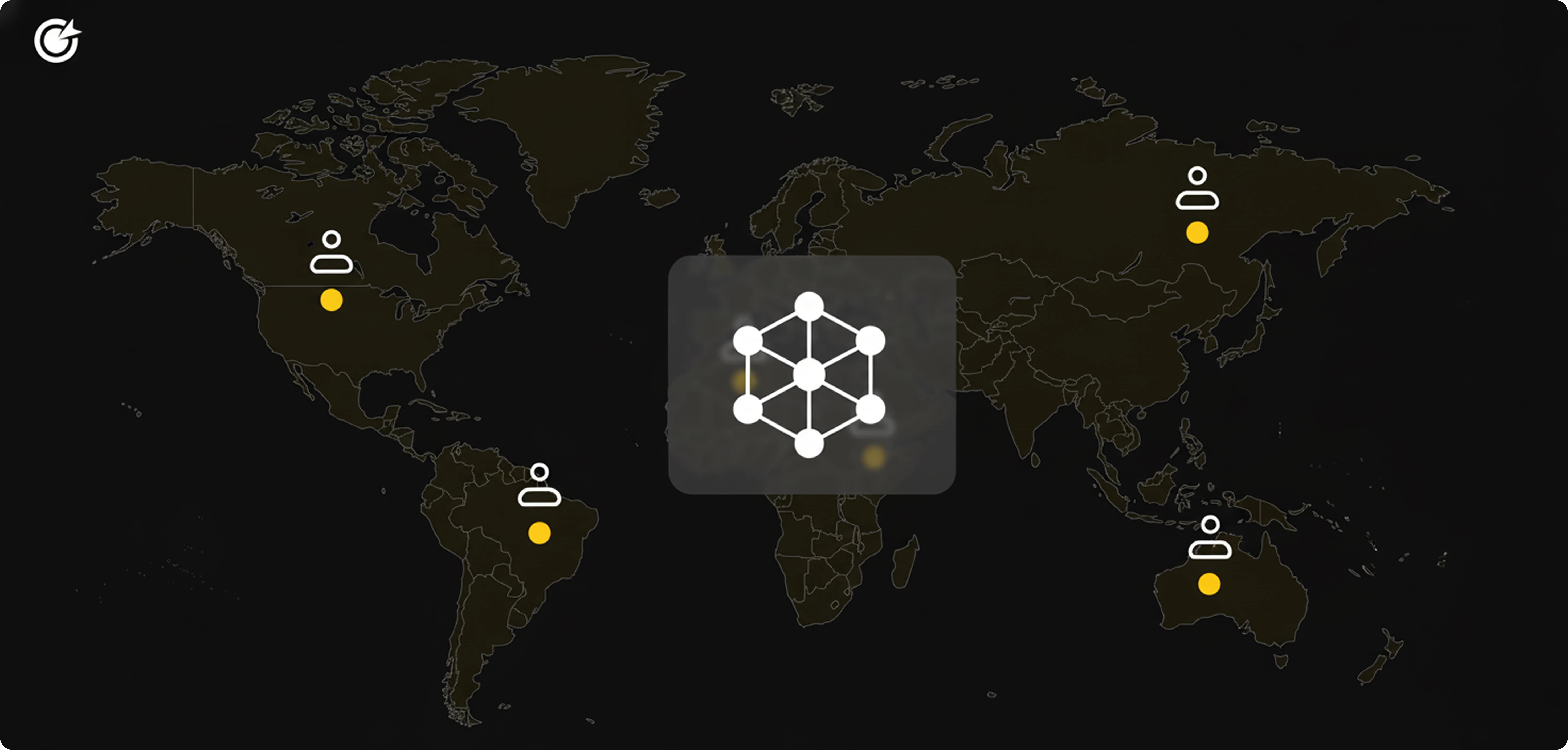The Power of a Declarative API with GraphQL
A GraphQL developer is a specialized backend or full-stack engineer who builds and consumes APIs using the powerful GraphQL query language. Unlike traditional REST APIs, GraphQL allows clients to request exactly the data they need and nothing more, which leads to highly efficient and flexible communication between the client and the server.

Hiring a GraphQL developer means investing in a modern API architecture that empowers front-end developers, reduces the number of network requests, and provides a strongly-typed schema that serves as a single source of truth for your data. They are key to building fast, data-driven applications in a declarative and scalable way.
GraphQL Fundamentals and Core Concepts
A proficient GraphQL developer must have a deep and practical understanding of its core concepts. This includes the ability to design and write a well-structured GraphQL schema using the Schema Definition Language (SDL). They must be experts in defining types, queries, mutations, and subscriptions to model the application's data.
They should be able to write complex queries from a client's perspective, using features like variables, fragments, and aliases to fetch data efficiently. Understanding how a GraphQL server parses, validates, and executes a query against the schema is a fundamental skill for any developer in this role.
Schema Design and Best Practices
The schema is the heart of any GraphQL API, and a top-tier candidate must be an expert in schema design. This is about more than just defining types; it's about modeling a data graph that is intuitive, flexible, and can evolve over time without breaking existing clients. They need to understand the principles of a graph-based data model.
A skilled developer will know how to design a schema that avoids common pitfalls, such as overly complex object relationships or deeply nested lists that can lead to performance issues. They should be familiar with best practices like using interfaces or unions to handle polymorphic data and designing a schema that is client-centric rather than a direct mirror of the backend database.
Server-Side Implementation
A GraphQL developer must have hands-on experience building a GraphQL server. While GraphQL itself is just a specification, they need to be proficient with one of the popular server libraries, with Apollo Server being one of the most widely used options in the Node.js ecosystem. For other languages, libraries like Graphene (Python) or GraphQL-Java are common.
A key skill is the ability to write resolvers—the functions that are responsible for fetching the data for a specific field in the schema. They need to be able to connect their schema to various data sources, such as databases, microservices, or third-party APIs, and write efficient data-fetching logic within their resolvers.
Client-Side GraphQL Consumption
A well-rounded GraphQL developer should also have experience consuming a GraphQL API from a client-side application. They need to understand the other side of the equation and how front-end developers will interact with their API. This provides valuable context that leads to better schema design.
Proficiency with a major client-side library like Apollo Client or Relay is a huge plus. Experience with features like caching, optimistic UI updates, and managing local state with a GraphQL client (e.g., using an Apollo query like gql("query GetUser { ... }")) demonstrates a holistic understanding of the full GraphQL workflow.
Performance Optimization and The N+1 Problem
One of the most infamous challenges in GraphQL is the "N+1 query problem," where a request for a list of items results in a separate database query for each item in the list. A skilled GraphQL developer must understand this problem deeply and know how to solve it efficiently.
The primary solution is to use a batching and caching strategy, and experience with a library like DataLoader is an essential skill. They should be able to implement DataLoader to coalesce individual data-fetching requests from a single GraphQL query into a smaller number of batched requests to the underlying data source, which is critical for a performant API.
Security in a GraphQL Context
Securing a GraphQL API presents unique challenges compared to a traditional REST API. Because clients can request deeply nested data, a developer must know how to protect their server from overly complex or malicious queries that could be used for a denial-of-service attack.
They should have experience implementing security measures like query depth limiting, query cost analysis, and timeout enforcement. Furthermore, they need to be able to implement robust authentication and authorization logic within their resolvers to ensure that users can only access the data they are permitted to see.
Federation and Schema Stitching
For large-scale applications with a microservices architecture, managing a single monolithic GraphQL schema can become a bottleneck. An advanced GraphQL developer should be familiar with modern techniques for creating a unified data graph from multiple underlying GraphQL services.
Experience with Apollo Federation is the leading industry standard for this. The ability to design and build a federated graph, where each microservice owns a piece of the overall schema, is a key skill for building scalable and maintainable GraphQL platforms in an enterprise environment.
Subscriptions for Real-Time Data
For applications that require real-time updates, a GraphQL developer should be skilled at implementing subscriptions. Subscriptions allow a client to subscribe to an event on the server and receive updates in real time, typically over a WebSocket connection. This is a powerful feature for building chat applications, live notifications, or financial dashboards.
A candidate should have experience setting up the necessary infrastructure for subscriptions, including a publish/subscribe system (like Redis Pub/Sub), and writing the resolver logic to push data to connected clients when a relevant event occurs.
The GraphQL Ecosystem and Tooling
A proficient GraphQL developer is familiar with the rich ecosystem of tools that support development. This includes using a tool like GraphiQL or the Apollo Studio Explorer for interactively exploring and testing a GraphQL schema. These tools are indispensable for both development and documentation.
They should also be comfortable with a "schema-first" development approach, where the schema serves as the contract between the front-end and back-end teams. An understanding of how to use tools to generate code or types from a GraphQL schema (e.g., with GraphQL Code Generator) demonstrates a commitment to a modern, efficient workflow.
How Much Does It Cost to Hire a GraphQL Developer
The cost to hire a GraphQL developer, typically a specialized backend or full-stack engineer, is generally high due to the strong demand for this modern API skill. The salary is influenced by their geographic location, overall years of engineering experience, and their proficiency with both the server-side implementation and client-side consumption of GraphQL.
Salaries in major North American and Western European tech hubs are typically the highest. The following table provides an estimated average annual salary for a mid-level developer with strong GraphQL expertise.
| Country |
Average Annual Salary (USD) |
| United States |
$138,000 |
| United Kingdom |
$92,000 |
| Germany |
$88,000 |
| Canada |
$108,000 |
| Australia |
$105,000 |
| Poland |
$62,000 |
| Ukraine |
$58,000 |
| India |
$42,000 |
| Brazil |
$52,000 |
| Netherlands |
$95,000 |
When to Hire Dedicated GraphQL Developers Versus Freelance GraphQL Developers
Hiring a dedicated, full-time GraphQL developer is the right choice when you are building a long-term data graph that will serve as the core API for your suite of applications. A dedicated developer can take ownership of the schema's evolution, manage its performance and security, and act as a central point of contact for all the client teams that consume it. This is a strategic role for a data-driven organization.
Hiring a freelance GraphQL developer is a more tactical approach, perfect for specific, well-defined projects. This is an ideal model for migrating an existing REST API to GraphQL, building an initial proof-of-concept, or getting expert help to solve a specific performance issue. Freelancers provide the specialized expertise needed to get a project up and running quickly without a long-term commitment.
Why Do Companies Hire GraphQL Developers
Companies hire GraphQL developers to build more efficient and flexible APIs that can accelerate front-end development. The core benefit of GraphQL is that it eliminates the problems of over-fetching and under-fetching data that are common with REST APIs. Clients can request exactly the data they need in a single round trip, which is especially important for mobile applications on slow networks.
Furthermore, GraphQL's strongly-typed schema acts as a contract between the front-end and back-end, which greatly improves developer productivity and reduces communication overhead. It allows front-end and back-end teams to work in parallel more effectively and provides excellent, self-documenting APIs that are a joy for client-side developers to use.
In conclusion, hiring a top-tier GraphQL developer requires finding an engineer with a deep understanding of both the theory and the practical implementation of a modern, declarative API layer. The ideal candidate will combine expertise in schema design and server-side development with a pragmatic approach to performance, security, and the needs of client applications. By prioritizing these skills, organizations can build powerful, flexible, and efficient data graphs that will serve as the foundation for their next generation of applications.

























